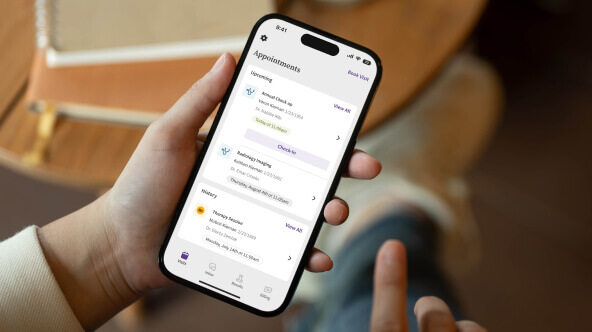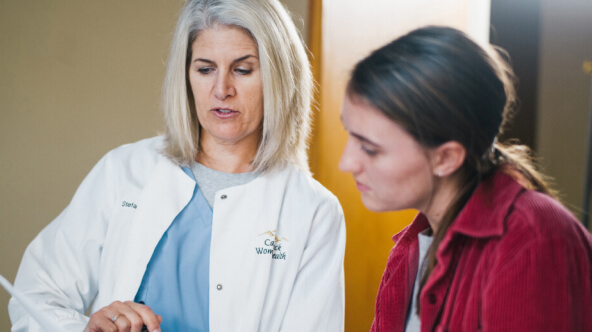Pre-procedure engagement is the true test of ASC and clinic coordination
A surgical day doesn’t begin in the OR; it starts long before. By the time a patient walks into an ASC, every detail should be squared away: insurance verified, forms completed, financials sorted, and pre-op instructions followed.
If even one piece is missing when a patient arrives, the entire day can fall off schedule, disrupting care and affecting the bottom line. It’s preventable, but more common than it should be.
With ASCs experiencing a 21% cancellation rate in 2024 (up slightly from the previous year),1 there’s an opportunity to improve outcomes by strengthening pre-procedure readiness.
This isn’t about someone dropping the ball, it’s about systems not supporting the workflow. Most of the time, readiness starts in the clinic not at the ASC. Without close coordination between the two, small gaps quickly become larger challenges. Disconnected tools and scattered processes simply can’t support what the surgical day demands.
The gaps start earlier than you think
Pre-op processes often feel complex because they involve many moving parts across multiple teams. Many of the interruptions don’t originate at the surgery center; they start with the handoff between clinic and ASC.
While patients may experience it as one continuous journey, behind the scenes the processes don’t always reflect that. Scheduling may happen in one system, while intake is handled in another. Insurance is verified, but the information isn’t easily visible to the team on the surgery side. Financial conversations happen, but they don’t always follow through to the point of payment, and staff end up having to piece everything together.
That fragmentation can lead to delays, rescheduled procedures, confused patients, and wasted time spent tracking down missing details. What feels like inefficiency is often a fundamental breakdown in coordination. But with the right tools, clinics and ASCs can stay connected, helping teams move from reacting to running the day with clarity and confidence.
What pre-op coordination looks like
When people talk about surgical precision, they usually think about what happens inside the OR. But the pre-procedure phase is where a lot of complexity lives.
Think of it as a pressure test. From the moment a case is scheduled, every task including eligibility checks, intake forms, lab results, financials, and pre-op instructions is a dependency. When those aren’t coordinated, friction builds quickly.
In a well-run workflow, staff can see exactly where things stand without chasing details or switching between multiple systems. Balances and copays are confirmed and collected. Labs and clearances are reviewed in advance. And the patient shows up informed and prepared for what to expect.
When all of that is in place ahead of time, it creates a better patient experience. When it’s not, teams spend valuable time troubleshooting instead of delivering care.
When pre-procedure engagement is coordinated between care settings, the day flows better for everyone involved.
Why a single solution across care settings makes pre-procedure readiness possible
Most clinics and ASCs already have a tech stack. The problem arises when those tools don’t talk to each other or worse, when they require staff to act as the bridge between systems.
Pre-procedure engagement can’t live in spreadsheets, inboxes, or partially integrated platforms. At an ambulatory surgery center, there’s no time to troubleshoot processes mid-shift. Everything needs to be ready, shared, and reliable before the day begins.
With a single solution or an interoperable platform that follows the patient from clinic to surgery, workflows become coordinated, going beyond merely passing data back and forth.
In practice, this means scheduling reflects real capacity, intake happens once and travels with the patient, reminders and prep instructions come from a single source, and insurance eligibility is verified, visible, and actionable.
When everyone’s working from the same information, handoffs are smoother, accountability is clear, fewer things slip through the cracks, and it’s easier to deliver a high-quality experience.
Tangible wins for everyone from efficiency to experience
Bringing both care settings and pre-procedure workflows into a connected platform reduces last-minute surprises, eliminates duplicate work, and protects the surgical schedule.
Patients benefit from improved communication and a more satisfying experience with fewer surprises. Staff are less burdened with manual work and can focus on delivering better outcomes. ASCs can see fewer cancellations, improved throughput, and a stronger financial performance.
With every step visible and trackable, leaders can spot bottlenecks early, optimize workflows, and scale what’s working without relying on constant workarounds.
It’s not just tech, it’s a smarter strategy
Time and trust are critical factors in outpatient surgical care. If your pre-procedure engagement process is breaking down, chances are they’re breaking at the system level.
Pre-op readiness is a strong indicator of whether clinic and ASC coordination is working. It’s one of the best places to start making strategic improvements that positively impact patient experience, staff efficiency, and financial performance.
With over 25 years of experience building technology to support ambulatory care, we’re now bringing that same experience to the surgical setting, starting with orthopedics and pain management.
More details to come, but for now, here’s a question worth asking: What would change if every patient showed up ready and paid before they walked in?
If your answer includes fewer delays, less stress, and more time to focus on care, take a look at our ASC resources or better yet, reach out. We’d love to help your clinic and ASC build a tighter connection.
More patient satisfaction resources
Continue exploring
1. Becker’s ASC Review. (2023, April 24). ASC cancellation rates tick up. https://www.beckersasc.com/asc-coding-billing-and-collections/asc-cancellation-rates-tick-up/













